Mock Up
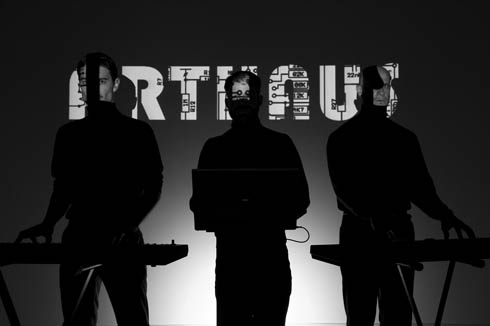
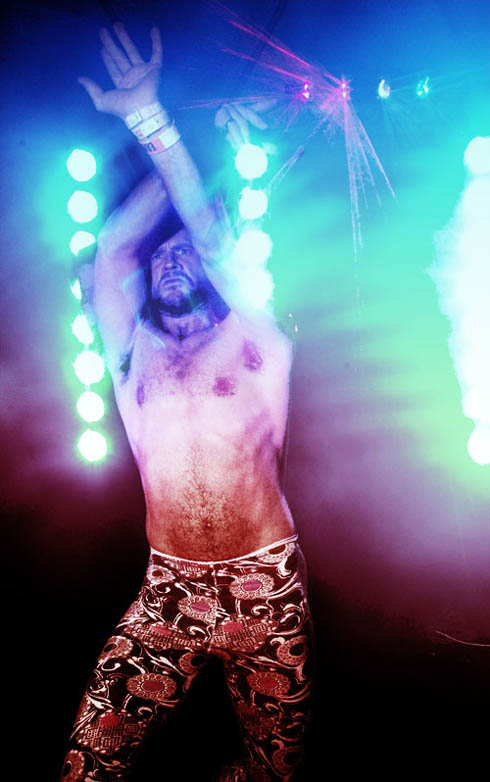
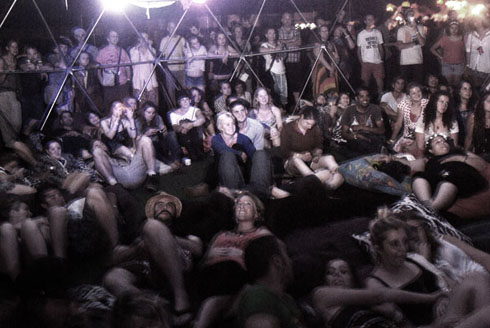
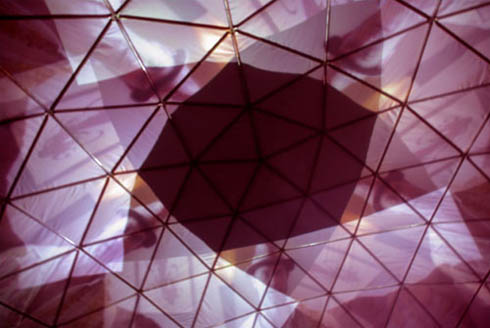
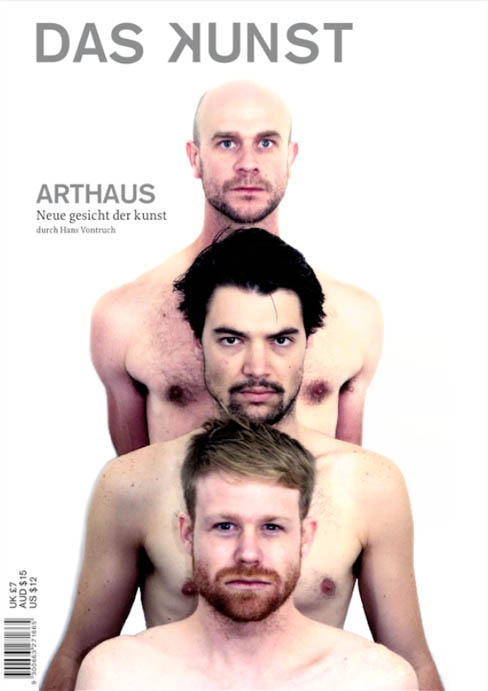
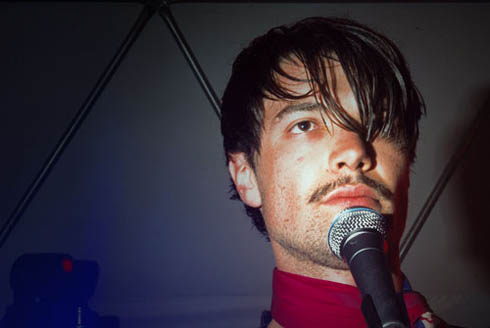
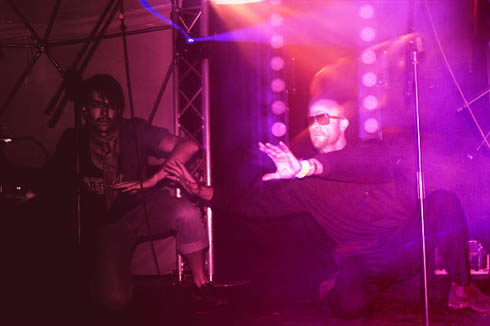
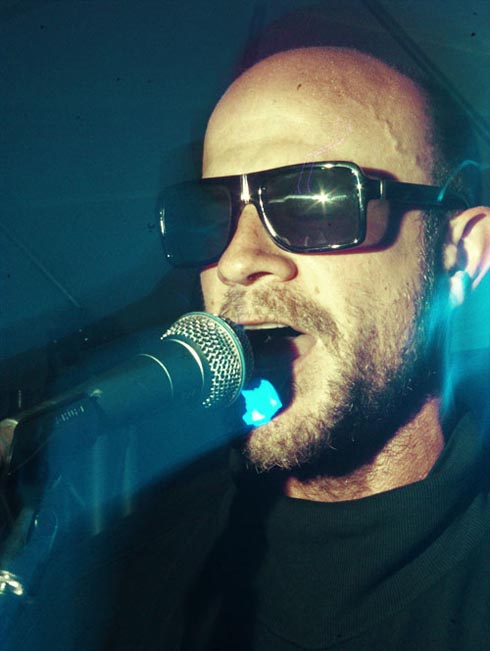
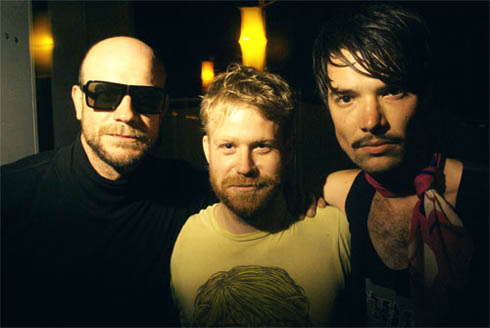 Text: Gabriel Knowles Images: Arthaus
Text: Gabriel Knowles Images: Arthaus
The futuristic musical farce is, at this stage, a very niche genre of live performance. In fact it’s so niche that the three man team behind Arthaus: Existentialism with an Interval, are undoubtedly the only people pushing its barrow. By rolling electronic music, choreography, custom programmed light projections and a bunch of political satire Ben Kazlauskas, Nick Darling and Tim Bright have forged their own path that sits somewhere between a musical and a comedy show. What came to prominence as a five minute bit at an open-mic session at the Edinburgh Comedy Festival has now developed into full show complete with a mockumentary, showcasing a once famous but now forgotten European electronic music group with a penchant for conceptual dance, technological trickery and new wave French cinema. Gabriel Knowles caught up with Tim Bright as they prepared for their run at the Melbourne Comedy Festival.
Gabriel Knowles: How does the idea for a “futuristic musical farce” develop?
Tim Bright: Basically Nick and I have been doing things together for a number of years. We did camera installations and VJ’d (video jockeying) at clubs in Sydney. We did a few things after that but then we both went overseas for a while but we wanted to keep performing and eventually we ended up in Melbourne and decided we wanted to work as an audio-visual group. The people I admired and still do to this day are a group from London called The Light Surgeons who’ve been doing stuff from the early 2000s – I saw what they did almost as live documentary, they were cutting video on the fly and they also had lighting, projections and props. It was sort of lo-fi in a weird technological way.
So we had an idea to do things like that and the first thing we did was this stock market concept show. It was this kind of AV show where we played a bunch of songs, visuals and Nick played the role of a speaker at a conference and we took a live feed of the stock market. From that we got invited to play this AV festival at Loop Bar and we intended to do the same show, just bigger and better, but then it got closer to the show and it turned out we were playing on the weekends because the festival was on over four weekends. And obviously we couldn’t do it on the weekends because all the stock markets were closed, so we needed to do something else. So we were sitting around and Nick remembered this art house song we recorded years earlier as a joke when we lived in Sydney. I didn’t even have the files any more so we had to re-record a version of this song that’s essentially a piss-take of super-serious artists. So we recorded four more songs and turned up at this serious AV festival that was really academic, you know they had things like violins hooked up to televisions and the music changes the channels and stuff like that. So we’re setting up while there’s this experimental violinist playing and once she’s done everyone politely shuffles into the room which was really weird because what we were about to do was ridiculous. So they sat down and we played and they all loved it. Everyone was laughing throughout it.
The next incarnation came about when I was in Edinburgh with Ben, who’s now the third member of the group. We were walking on a kids show called The Jungle Book and we got asked to do an open mic in our spare time. So I suggested to Ben that he play Nick’s character of this German artist and we’ll do it together. And again it was really out of context because everybody else at the open mic nights were playing acoustic guitars and singing or doing stand-up and we were getting up there with a laptop and plugging into their PA and give them Arthaus.
The next step was Peats Ridge at the beginning of this year and after that we decided to do the Comedy Festival so we brought a director on board and worked with a choreographer, so it’s become a lot more serious.
GK: I understand you have to adapt the show from venue-to-venue. Does that impact on the composition of each show?
TB: Definitely. It’s sort of never finished in the sense that you always get it to a point where it’s good enough for that environment, but maybe the next day you’ll do something else and then the day after that something else again. For example one of the differences of this venue is that Ben and Nick have such a prominent position at the front of the stage that there’s less focus on the screen at the back of the stage, so they end up carrying the show, which makes life easier for me. Some of the sections are quite tight – the songs, the lighting, the dancing and the visual effects are really tight, so I’m constantly going in there every day to tighten the screws to make sure it all works. For example one of the problems I have is that I need two computers to run everything, a PC and a Mac, and I’ve had so many issues getting them to communicate with each other. They’re communicating via MIDI for this. It used to be a protocol for music but it’s for anything now really, it’s just messages. The advantage of using MIDI is that if anything does fall down I can still control it live with touch pads and keyboards. The reason why I like to do it like that is that it means I can still perform it live.
In my other guise as a technician at the Convention Center (Melbourne) and other things that I do – it’s all hardware based, you’ve got a lighting desk or a vision switcher that’s all programmed in already. Theoretically you could reprogram them but it takes time whereas with this method you can record takes as you go and then play that back again. So you can record takes of lighting or video settings as a MIDI file and then you play that file back in time with the music for example and that triggers the lights or video. Because I’ve got three or four programs running at once on each computer I’ve got to be careful I’m sending the right files to the right places.
GK: Why does that lo-fi/technological aspect appeal to you?
TB: I guess I’ve always been into futuristic stuff – I’ve always liked sci-fi and electronic music and lights. It’s futurist art that’s really energetic. I think it’s a really tricky thing to do, I’ve seen plenty of audio-visual performances that are in my opinion not so great. You’ll have a band playing on a makeshift stage in a cinema or something with video loops playing on a screen behind them. For me that doesn’t really work because it’s a bit dislocating when there’s no real connection between the band and the screen. There’s something about the immediacy of it that’s really exciting when it’s done right.
GK: Each of your characters broadly reflects each of you outside of Arthaus. What’s the story behind them?
TB: The journey if you like, is that Hans Michael is a modern dancer, Pierre is a film-maker and Clauter is a producer/DJ. So Pierre and Hans Michael met at some point in the mid-90s in Europe and they were doing terrible work but thought they were doing incredible stuff and they met Clauter in Geneva and they dragged him along to become a trio. We don’t know if Clauter’s happy about it but he’s also using them to get his music out into the world. Hans Michael is actually a very good dancer but he’s ridiculous. He received a grant from the Berlin Post-Constructionists so he studied scaffolding with it. Pierre is quite successful but he gets caught up in his own arrogance. He’s shot supermodels naked on the Arc De Triomphe as a form of satire but all he wants to do is make ‘real’ art. They all need each other in one form or another.
GK: How have you personally arrived at the point where you’ve decided to construct your own programs to control the lights, sound and projections for the show?
TB: When I studied digital media at COFA one of the courses that interested me the most was one where we were doing interactive art basically. We started out with little bits of code in Director, the Macromedia program before they were with Adobe. It was simple things, making little animations move with microphone inputs and ever since that point I’ve loved the idea of using computers as the brains behind a piece of art. For someone who can’t draw it’s fabulous because you can do visual stuff. For this project I’ve started writing my own scripts and objects to control the software. With the lighting for example there’s the potential to do really exciting things with video input etc that you can’t do with straight lighting desks that people make. People that are into code and programs that do those types of things can design their own models of things essentially. It’s a long bow to draw, but it’s been argued that software like Photoshop and Final Cut for example have been designed a certain way – they in some sense restrict the things you can do. For example in Final Cut you can’t create an interactive piece of video, you can only make a linear piece of work. But with your own software you could make an interactive and linear video all the same piece for example. It’s that versatility that’s really exciting and interesting. I’m fascinated by getting real world data into a show and using a cloud in performances, I think that’s really powerful.
Arthaus is playing at the Lithuanian Club from the March 30 until April 23 (no shows Sundays and Mondays or April 16). Doors open 8pm.
Lithuanian Club, 44 Errol Street North Melbourne VIC 3051
Next story: Shoot First – Mr Blanc



